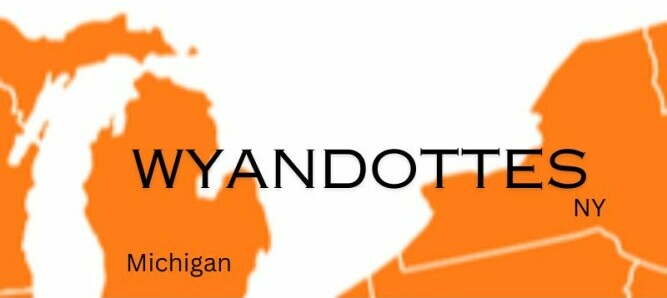
Wyandotte Chickens look like someone painted their feathers on. They are so impossibly pretty that it is hard to imagine they could have gotten them any other way.
They are gorgeous, for sure, and if that is not reason enough to adore these lovely birds, they are strong, large, dual-purpose chickens that are cold-hardy, tolerant of other chickens and children and aren’t broody.
You could say that the Wyandotte checks every box a chicken owner could ask for.
Let’s explore the top attributes of the Wyandotte breed and how they make an excellent addition to any flock. You’ll be pleased to discover their remarkable adaptability, which allows them to thrive in various environments, and their friendly demeanor that endears them to chicken folks everywhere.
The beauty of Wyandotte chickens lies in their feathers and in their practicality. If you’re wondering whether Wyandottes might be the right pick for your coop, I’m here to help you decide.
Their resilience and low-maintenance profile make them stand out. Their thick feathers and round and sturdy body shape contribute to their cold hardiness, which, along with their composed temperament, adds to the appeal they have for anyone.
By the end of this section, you’ll understand why Wyandottes could be a fantastic choice, both for their physical attributes and laid-back nature.
Let’s take a look at the specifics of their origin and practical details like egg-laying, weight, and color variations in the sections below.
Prepare to be captivated by these plumed treasures as we step into the world of the distinctive Wyandotte chicken.
The Origin and Versatility of Wyandotte Chickens

These birds first graced the world with their presence in the United States around the 1870s. Named after the Wyandot people, these chickens carry a slice of American heritage in their genes.
But that’s not just a fun fact to tell at parties; it’s also about understanding the breed’s versatility. You see, Wyandotte chickens are considered a dual-purpose breed. This means they’re good for both egg-laying and meat production. Wyandotte is your bird if you’re looking for a chicken that pulls double duty.
Speaking of duties, let’s talk about size. Wyandotte chickens typically range from the hen’s average weight of 6-7 pounds to the rooster’s more robust 8-9 pounds. Their size lends to their substance as a meat bird.
Now, what about their dress code? Well, Wyandottes are known for their stunning variety of colors and patterns. You’ll find them in classic silver-laced, golden-laced, blue, and even Columbian (similar to a Light Brahma). It’s this diversity in appearance that often makes them the show-stoppers of the coop.
Wyandotte Traits and Care
How prolific are Wyandotte chickens when it comes to laying eggs? Wyandotte hens are known for laying a solid amount of eggs, typically around 200 eggs per year. When it comes to egg color, they lay beautiful, large, light brown eggs that make a perfect breakfast.
Wyandottes are a superb choice if you want a breed that’s tough as nails. They are remarkably cold-hardy, thanks to their development in the north of Michigan and New York, dense feathering, and rose comb, which makes them a fantastic fit for chillier climates.
And they don’t just brave the cold; they are reasonably heat-tolerant, although they’ll appreciate some shade and fresh water during the hot summers.
Considering temperament, Wyandottes are often described as easygoing and gentle. They are calm chickens and can also get along with your other breeds. They tend to be docile but aren’t necessarily lap chickens. That’s the strategy I like to leverage for a peaceful coop.
Thoughts on foraging? Wyandottes are quite adept at foraging, which means fewer feed costs for you and a happier, healthier chicken. Encourage them to peck around the yard, and they’ll reward you with pest control.
In my opinion, their disease resistance is another point in their favor. While no chicken is immune to all diseases, Wyandottes are a robust breed. Proper care and management make them less likely to fall prey to common poultry health issues.
They don’t have any special care needs. They will be content if they have a well-ventilated coop, a balanced diet, and enough space to roam. Regular health checks and cleanliness can go a long way in keeping your Wyandottes thriving.
So my question to you today is, are Wyandotte chickens the right addition to your homestead or backyard? Remember these traits and care needs; you may find they fit the bill perfectly.
Summing Up Wyandottes

From its all-American roots to its dual-purpose efficiency and striking plumage, the Wyandotte presents a compelling package for both novices and seasoned chicken keepers alike.
Your journey with Wyandotte chickens doesn’t have to be complicated. If you’re considering adding these birds to your flock, remember their resilience in various climates, endearing temperament, and low-maintenance care regime.
They are a testament to the joy and practicality that backyard poultry can offer to those willing to invest time and care into their feathered companions.
Wyandottes aren’t just about aesthetics; they’re also about function. Their consistent egg production and robust health make them an ideal candidate for anyone looking to dip their toes into the world of self-sufficiency.
Moreover, their inquisitive and friendly nature gives them potential as pets that enhance the dynamics of your homestead.
In closing, I really hope that your consideration of the Wyandotte breed is met with the same enthusiasm and confidence that many chicken aficionados—myself included—share. If Wyandottes fits the bill, you’ll likely find great satisfaction and a touch of chicken-keeper’s pride.
I’d love to hear your feedback or experiences with Wyandotte chickens. Whether you’re a seasoned breeder or someone who’s just starting out, your insights can help others make informed decisions.
Thanks for stopping by. Take care.
Dave
Chickenmethod.com
